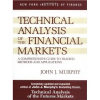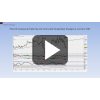Latest Trader Channel Posts
Using Fibonacci (Part 1)
A lot has been written about Fibonacci and its methods for traders. This is a back to basics article about what Fibonacci is and how the key Fibonacci levels that are used in trading are constructed.
As a trader, you won’t manually calculate the Fibonacci levels from scratch each time you want to put them on a chart – the numbers are usually built into the charting package you use. But there are two reasons for this article: firstly, if you’re going to use these levels and believe in them when trading, you will want to know where they came from; and secondly, you will want to add your own Fibonacci percentages to the standard ones included in a charting package.
What is the Fibonacci Series?
Leonardo Fibonacci was a 12/13th century mathematician that popularised a number sequence that came to be simply known as the Fibonacci sequence. Generations of mathematicians since have discovered the Fibonacci ratios in areas as diverse as biology, ancient architecture and astronomy.
The sequence is very simple: each number is the sum of the previous two numbers. As a starting point, 0 and 1 are used.
This generates the following set of number series:
0, 1, 1, 2, 3, 5, 8, 13, 21, 34, 55, 89, 144, 233, 377, 610, 987...
So for example, if you take the number 144, it is made up by adding the two previous numbers before it, 55 and 89.
The series simply continues forever, to infinity.
The Golden Ratio
This sequence, as ordinary as it looks, has some very special properties. The most sited aspect is something called the “Golden Ratio”.
Let’s take a look at the Golden Ratio and how it’s derived. If you pick any number in the series, and divide it by the next one along, the answer will equal 0.618 or (61.8%). For example, 89 divided by 144 equals 0.618. Or you could pick 610 divided by 987. The answer will still be 0.618. This characteristic will hold no matter how long you continue the Fibonacci series for and whichever two numbers you pick. So, 61.8% is the Golden Ratio.
Now at this point, it’s worth touching upon what separates Fibonacci from other stuff out there in the world of Technical Analysis.
The Fibonacci series and The Golden Ratio are a natural phenomena – it is not something that was invented artificially. Rather it was discovered everyday in the world around us. Most readers are already well aware of this but its significance is often overlooked. When you are using Fibonacci points on a chart, you’re not looking for something that has been designed for trading that may work some of the time and not at other times, like an indicator. Instead, you are using something that is inherent in natural systems such as in the movement of planets, the proportions of the human body, and importantly for us the movement of price in a market and on a chart.
One example of its inherent quality is when there is an economic data release. You will find that even during a time of data release the price movement still obeys Fibonacci points – and data releases in particular knockout regular technical indicators.
Other Fibonacci Levels
Aside from 61.8%, there are other Fibonacci percentages. Where do they come from?
Well, instead of dividing one Fibonacci number by its adjacent number, you can use numbers one or two places apart. So let’s use 233 as an example to generate other Fibonacci percentages as follows.
Taking the consecutive Fibonacci numbers:
55, 89, 144, 233, 377
You get:
55 / 233 = 23.6%
89 / 233 = 38.2%
144 / 233 = 61.8%
233 / 233 = 100%
377 / 233 = 161.8%
Above 100%, you can use the multiples of the first set of percentages – 123.6%, 138.2% etc. As you can see from the above, 161.8% is a true Fibonacci percentage and is the inverse of 61.8%.
In addition to the above percentages, further ones are derived by squaring (or multiplying by itself) the Golden Ratio, 0.618. This then gives you:
0.618 x 0.618 = 0.786 (78.6%)
0.786 x 0.786 = 0.886 (88.6%)
0.886 x 0.886 = 0.941 (94.1%)
My Own Fibonacci Levels
Every trader ultimately uses his own set of Fibonacci levels. These are the ones I use personally up to 2, or 200%:
0.236
0.382
0.500
0.618
0.707 [this is the reciprocal of the square root of 2]
0.786
0.886
0.941
1.000
1.127 [this is the fourth root of 1.618]
1.236
1.382
1.500
1.618
2.000
What’s next...?
This section has covered what the Fibonacci sequence is exactly, and where the Fibonacci percentages come from. In the next section we’ll look at how they can be applied when you’re trading.
As a trader, you won’t manually calculate the Fibonacci levels from scratch each time you want to put them on a chart – the numbers are usually built into the charting package you use. But there are two reasons for this article: firstly, if you’re going to use these levels and believe in them when trading, you will want to know where they came from; and secondly, you will want to add your own Fibonacci percentages to the standard ones included in a charting package.
What is the Fibonacci Series?
Leonardo Fibonacci was a 12/13th century mathematician that popularised a number sequence that came to be simply known as the Fibonacci sequence. Generations of mathematicians since have discovered the Fibonacci ratios in areas as diverse as biology, ancient architecture and astronomy.
The sequence is very simple: each number is the sum of the previous two numbers. As a starting point, 0 and 1 are used.
This generates the following set of number series:
0, 1, 1, 2, 3, 5, 8, 13, 21, 34, 55, 89, 144, 233, 377, 610, 987...
So for example, if you take the number 144, it is made up by adding the two previous numbers before it, 55 and 89.
The series simply continues forever, to infinity.
The Golden Ratio
This sequence, as ordinary as it looks, has some very special properties. The most sited aspect is something called the “Golden Ratio”.
Let’s take a look at the Golden Ratio and how it’s derived. If you pick any number in the series, and divide it by the next one along, the answer will equal 0.618 or (61.8%). For example, 89 divided by 144 equals 0.618. Or you could pick 610 divided by 987. The answer will still be 0.618. This characteristic will hold no matter how long you continue the Fibonacci series for and whichever two numbers you pick. So, 61.8% is the Golden Ratio.
Now at this point, it’s worth touching upon what separates Fibonacci from other stuff out there in the world of Technical Analysis.
The Fibonacci series and The Golden Ratio are a natural phenomena – it is not something that was invented artificially. Rather it was discovered everyday in the world around us. Most readers are already well aware of this but its significance is often overlooked. When you are using Fibonacci points on a chart, you’re not looking for something that has been designed for trading that may work some of the time and not at other times, like an indicator. Instead, you are using something that is inherent in natural systems such as in the movement of planets, the proportions of the human body, and importantly for us the movement of price in a market and on a chart.
One example of its inherent quality is when there is an economic data release. You will find that even during a time of data release the price movement still obeys Fibonacci points – and data releases in particular knockout regular technical indicators.
Other Fibonacci Levels
Aside from 61.8%, there are other Fibonacci percentages. Where do they come from?
Well, instead of dividing one Fibonacci number by its adjacent number, you can use numbers one or two places apart. So let’s use 233 as an example to generate other Fibonacci percentages as follows.
Taking the consecutive Fibonacci numbers:
55, 89, 144, 233, 377
You get:
55 / 233 = 23.6%
89 / 233 = 38.2%
144 / 233 = 61.8%
233 / 233 = 100%
377 / 233 = 161.8%
Above 100%, you can use the multiples of the first set of percentages – 123.6%, 138.2% etc. As you can see from the above, 161.8% is a true Fibonacci percentage and is the inverse of 61.8%.
In addition to the above percentages, further ones are derived by squaring (or multiplying by itself) the Golden Ratio, 0.618. This then gives you:
0.618 x 0.618 = 0.786 (78.6%)
0.786 x 0.786 = 0.886 (88.6%)
0.886 x 0.886 = 0.941 (94.1%)
My Own Fibonacci Levels
Every trader ultimately uses his own set of Fibonacci levels. These are the ones I use personally up to 2, or 200%:
0.236
0.382
0.500
0.618
0.707 [this is the reciprocal of the square root of 2]
0.786
0.886
0.941
1.000
1.127 [this is the fourth root of 1.618]
1.236
1.382
1.500
1.618
2.000
What’s next...?
This section has covered what the Fibonacci sequence is exactly, and where the Fibonacci percentages come from. In the next section we’ll look at how they can be applied when you’re trading.
Tags:
Fibonacci
5
Your rating: None Average: 5 (1 vote)











